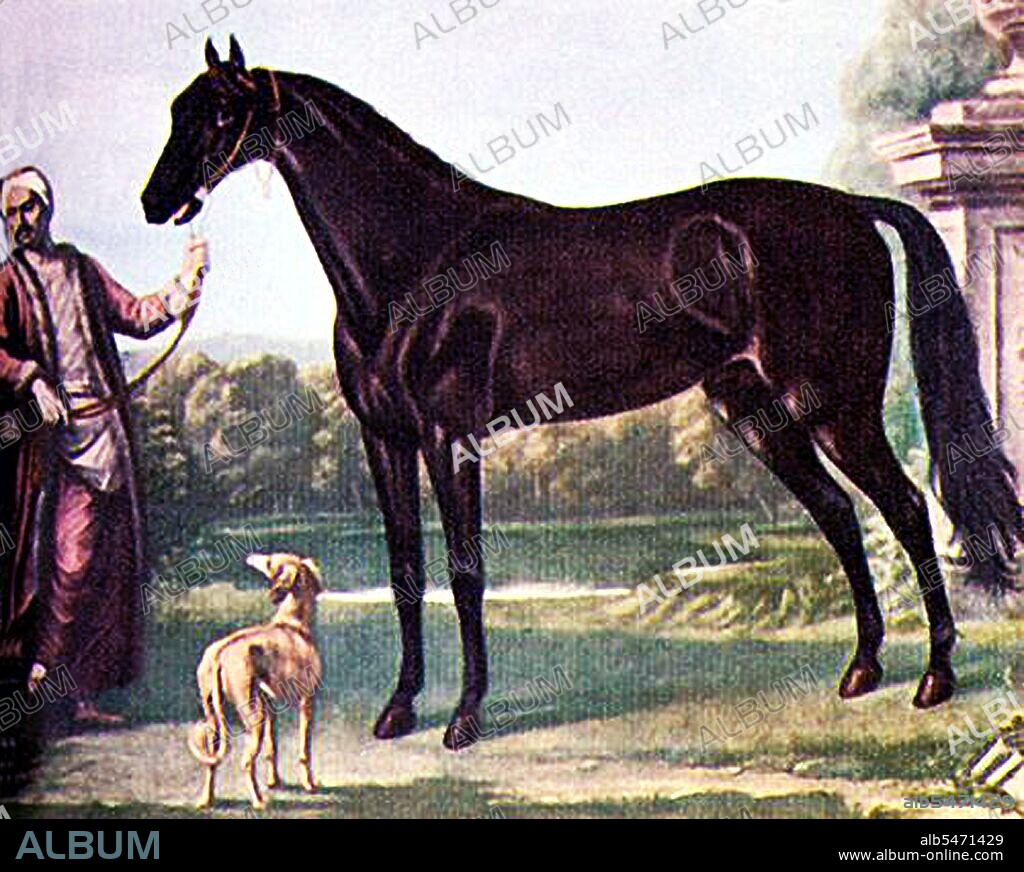alb5471429
United Kingdom: The Byerley Turk stallion, by John Wootton (ca. 1682–1764)

|
Añadir a otro lightbox |
|
Añadir a otro lightbox |



¿Ya tienes cuenta? Iniciar sesión
¿No tienes cuenta? Regístrate
Compra esta imagen.
Selecciona el uso:

Título:
United Kingdom: The Byerley Turk stallion, by John Wootton (ca. 1682–1764)
Descripción:
Ver traducción automática
The Byerley Turk or Byerly Turk, (c. 1684-1706) was the earliest of three stallions that were the founders of the modern Thoroughbred horse racing bloodstock (the other two are the Godolphin Arabian and the Darley Arabian). The stallion is believed to have been captured by Captain Robert Byerley at the Battle of Buda (1686), served as Byerley's war horse when he was dispatched to Ireland in 1689 during King William's War and saw further military service in the Battle of the Boyne. The General Stud Book simply states, without reference to his origins, that both man and horse were in Ireland: BYERLY TURK, was Captain Byerly's charger in Ireland, in King William's wars (1689). The Byerly Turk was reportedly a dark brown horse with the strong oriental or Arabian features of large eyes, arched neck and high carriage of the tail. Many of his offspring were also noted to have been either bay or black.
Crédito:
Album / Pictures From History/Universal Images Group
Autorizaciones:
Modelo: No - Propiedad: No
¿Preguntas relacionadas con los derechos?
¿Preguntas relacionadas con los derechos?
Tamaño imagen:
4700 x 3760 px | 50.6 MB
Tamaño impresión:
39.8 x 31.8 cm | 15.7 x 12.5 in (300 dpi)
 Pinterest
Pinterest Twitter
Twitter Facebook
Facebook Copiar enlace
Copiar enlace Email
Email
